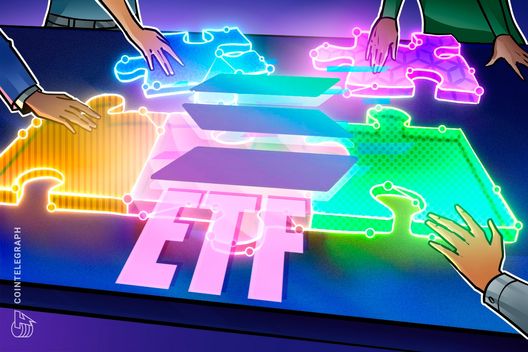In the ever-changing world of cryptocurrency, Stellar’s native token, XLM, has recently showcased notable volatility, pivoting within a $0.38 to $0.39 range. In a remarkable display of resilience, XLM dipped early on October 8 but quickly rebounded, closing near session highs, suggesting a strong buying interest at lower price points.
During a single hour of trading, XLM reflected significant short-term swings, momentarily falling back to $0.38 before swiftly reclaiming the $0.39 mark. This rapid recovery underscores a growing market momentum, further hinting at the possibility of an upward trend continuing. Institutional enthusiasm seems to be propelling Stellar’s ongoing strength, with open interest surging past $300 million, an indication of increased participation from institutional traders and funds looking to capitalize on the digital asset’s potential.
As a cryptocurrency compliant with ISO 20022 standards, XLM is strategically positioned for the anticipated upgrades to Fedwire and SWIFT in 2025, fostering growing institutional confidence in its role within the global payments landscape.
The accumulation around the $0.38 level indicates that large investors are keen to seize temporary price declines, as high trading volumes affirm renewed interest in Stellar’s infrastructure for cross-border payments. This consolidation near $0.40 implies that the market is increasingly convinced of XLM’s recovery trajectory, particularly as payment-focused digital assets gain mainstream acceptance.
From a technical standpoint, the volume analysis highlights increased selling pressure during the early hours of October 8, with trading activity peaking at 52.49 million during 06:00 AM, significantly above the 24-hour average of 27.43 million. This surge in volume around the $0.38 zone during declines underscores strong institutional accumulation, further confirming the support and resistance dynamics essential for a bullish outlook.

Stellar’s XLM Token Volatility and Market Dynamics
Key points about the recent performance and implications of Stellar’s XLM token:
- Heightened Volatility: XLM fluctuated between $0.38 and $0.39, indicating a 3% price range with signs of swift recovery.
- Strong Recovery Pattern: After a dip to $0.38, XLM rebounded back above $0.39, suggesting increased buying activity and market momentum.
- Institutional Activity: Open interest exceeding $300 million shows rising participation from institutional traders, bolstering XLM’s resilience in the market.
- Strategic Positioning: As an ISO 20022-compliant cryptocurrency, XLM is positioned for upcoming Fedwire and SWIFT upgrades in 2025, enhancing its potential role in global payments.
- Sustained Accumulation: Large buyers are capitalizing on dips around $0.38, reflecting a strong interest in Stellar’s cross-border payment infrastructure.
- Market Conviction: Consolidation near $0.40 indicates growing belief that XLM’s recovery may extend further due to mainstream adoption of payment-focused digital assets.
- Technical Indicators: Volume analysis showed elevated selling pressure but support around $0.38, confirming institutional accumulation during downturns.
- Support and Resistance Dynamics: Significant buying interest around $0.38 strengthens the potential for continued price recovery.
The dynamics surrounding XLM could impact readers’ investment strategies, particularly those interested in cryptocurrency and digital payments as mainstream adoption grows.
Stellar XLM’s Market Dynamics: A Comparative Look
Stellar’s XLM navigating through a narrow volatility range reflects not just its market behavior but also positions it uniquely in the cryptocurrency landscape. Unlike other digital currencies that may be susceptible to extreme price swings without clear buying signals, XLM’s recent bounce back after hitting $0.38 demonstrates its potential as a stable investment amidst market fluctuations. This recovery, paired with a healthy open interest exceeding $300 million, showcases a growing interest from institutional investors, marking XLM as a contender against other cryptocurrencies like Cardano (ADA) and Ripple (XRP), which also aim to facilitate cross-border payments.
Competitive Advantages: XLM’s compliance with ISO 20022 enhances its appeal as an innovative solution for upcoming payment infrastructure upgrades. The spike in trading volumes suggests a robust underlying support system, often lacking in competitors that might experience disproportionate selling pressure during downturns. This liquidity ensures that large buyers can efficiently accumulate tokens at lower prices, which is a significant edge over platforms that lack institutional backing or clarity regarding future developments.
Disadvantages: However, Stellar faces challenges, notably from other established players with larger market caps, such as Ethereum (ETH), which continues to dominate with a broader ecosystem of decentralized applications. The competitive landscape emphasizes scalability and platform versatility, where cryptocurrencies like Ethereum or Binance Coin (BNB) offer more than mere payment solutions.
Investors eyeing potential gains from stability and institutional endorsements may find XLM particularly attractive. On the flip side, risk-averse traders or those prioritizing diversified portfolios might see it as too specialized, potentially overlooking the broader cryptocurrency trends. As the digital asset market evolves, the strategic movements around XLM could spark discussions among investors about optimum asset distribution, potentially leading to expanded investment in the cross-border payment sector.














